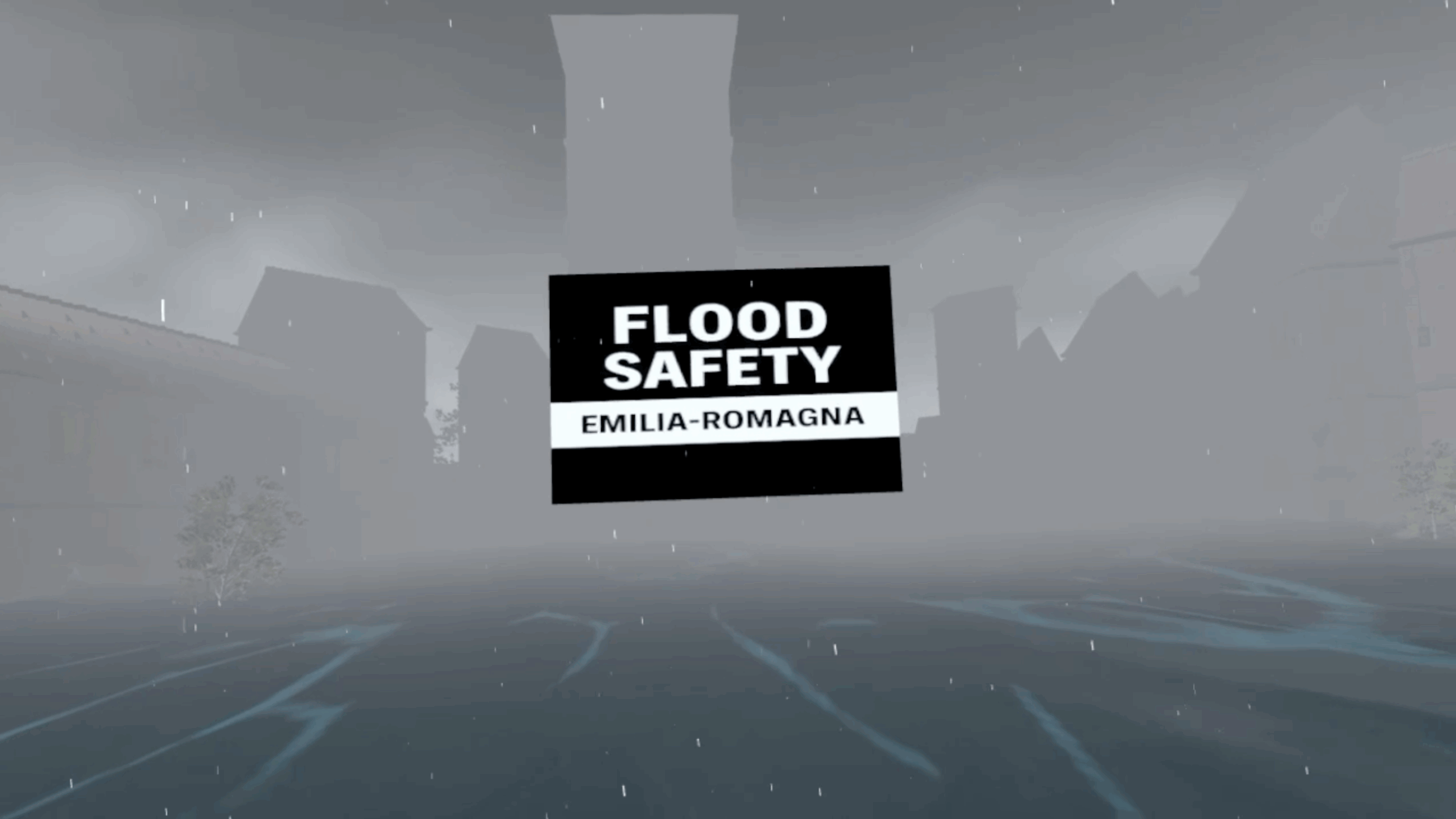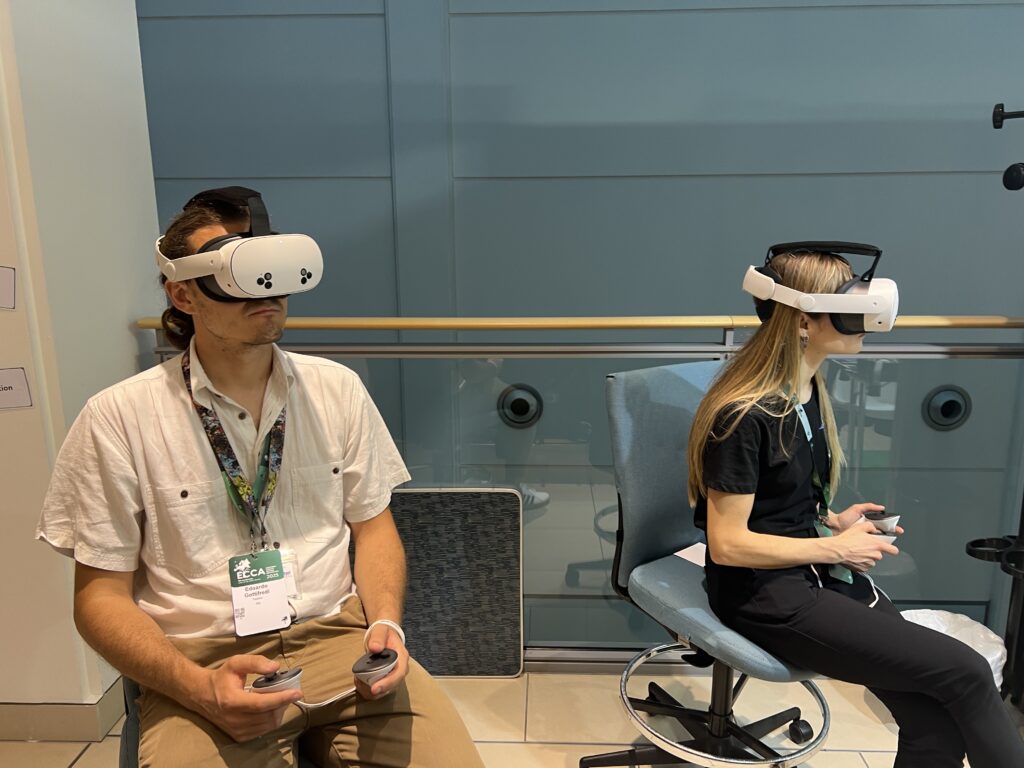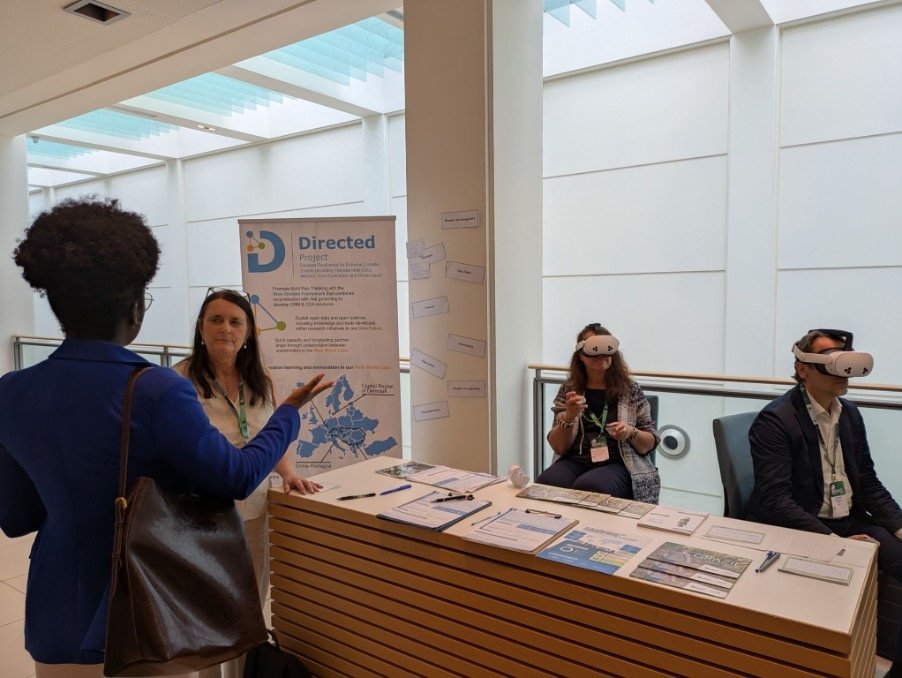“I Felt the Flood”: How Immersive VR could Transform Flood Preparedness in At-Risk Communities.

Written by Tracy Irvine
CEO Oasis IRIS – Innovation, Resilience, Immersion, Storytelling
Floods can happen fast — but building resilience takes time, awareness, and the right tools. In an era of escalating climate impacts, especially in vulnerable regions like Emilia-Romagna, the need to train for disasters before they happen has never been more urgent.
That’s why the DIRECTED Project is developing a range of powerful new innovations, one of which is: a Flood Safety Immersive Training Experience, built using Virtual Reality (VR). The experience is being piloted in Emilia-Romagna, Italy and was presented at the ECCA 2025 Conference in June, this training tool lets users (in this case citizens) feel what it’s like to be inside a flood — and provides training for them in what to do before, during, and after a flood.
Why Immersive Training Matters
For communities at high risk of flooding, preparation can mean the difference between chaos and control. Knowing how to take action can save lives and reduce property damage. But traditional flood awareness materials — static maps, public posters, emergency leaflets — can sometimes fail to connect emotionally or practically with residents. Many people don’t act until they’ve experienced a flood themselves.
In a case study that we have been developing comparing two major floods in Europe in Rhine-Erft, Germany in July 2021 and Emilia-Romagna, May 2023, to be published shortly through DIRECTED, it has identified that residents often do not respond to communications as they fail to understand the dangers of a flood or how serious a flood can be and thus some people ignore flood warnings and do not support local flood prevention initiatives.
DIRECTED’s immersive VR tool flips that dynamic. It places the user at the heart of a realistic flood scenario, triggering empathy, memory, and action. As one participant described:
“I imagined I could smell the water. It was vivid. I’ll never forget it.”
Another participant described feeling cold as he imagined his feet in the flood waters.
Why VR Works for Training
Virtual Reality isn’t just for gaming or entertainment — it’s a powerful tool for experiential learning. When it comes to disaster preparedness, VR allows users to step into a situation they may never have encountered before and safely practice how they would respond.
Here’s why VR is such a valuable tool for flood safety training:
- Embodied learning: People remember what they do — not just what they hear. By physically turning, reacting, and making decisions within a VR environment, users develop muscle memory and emotional recall that static instructions can’t provide.
- Safe simulation of dangerous events: Training for real floods is impossible and unsafe. VR creates realistic, risk-free scenarios where users can experience rising water, blocked roads, or emergency alerts without real-world consequences.
- Decision-making under pressure: Users must respond to prompts and unfolding situations, helping them rehearse what actions to take when time is critical. This includes recognising visual and auditory cues, evaluating risk, and choosing safe routes or behaviours.
- Fast transfer of complex information: Flood safety involves multiple messages — warnings, infrastructure risks, evacuation steps, emergency contacts. VR delivers this layered information all at once, through story, sound, action, and environment. What might take pages of explanation can be understood in minutes through immersion.
- Adaptable to diverse users: VR can be customised for different age groups, languages, literacy levels, and risk profiles — making it an inclusive tool for public education, emergency services, and vulnerable populations alike.
- Emotional impact builds memory: Many participants in the pilot said the experience stayed with them — from the sound of water to the sight of submerged homes. This emotional imprint makes it more likely that people will remember what to do in real emergencies.

Three Phases of Action: Before, During, After
The experience follows a simple but powerful structure — taking users through the three key phases of flood risk:
- Before – Understand alerts, prepare your home, and know your evacuation route, it also talks about past floods in the region.
- During – Respond quickly, make safe decisions, and avoid life-threatening mistakes.
- After – Assess damage safely, support your community, and prevent secondary risks.
Participants interact with the scenario, follow instructions, and learn how their choices affect outcomes. It’s not just training — it’s rehearsal for the real world.
Real Feedback from Real Users
At the ECCA 2025 Conference, dozens of people tested the immersive experience. Their feedback was clear:
Engaging:
“You are immersed very quickly. It feels personal.”
Educational:
“Very useful to educate people in schools. Everyone should try this.”
Emotionally impactful:
“Now I understand what my sister went through in the May floods.”
Inclusive potential:
“This would be great for volunteers, young people, the elderly — but we need to make sure everyone can access it.”
Users also offered valuable suggestions — from making scenes more dynamic and adding tasks like switching off electricity, to ensuring accessibility for people with disabilities or limited mobility.
Training for Citizens
The immersive experience is designed to serve citizen training so was based on the flood safety information from Agenzia regionale per la sicurezza territoriale e la protezione civile – Regione Emilia-Romagna.
One responder summed up their vision for VR Training:
“Use it for training volunteers, for analysing priorities in emergencies — even to simulate wildfires or marine flooding.”

From my point of view as a company developing VR immersive experiences the DIRECTED Project has enabled me to test this technology in the disaster management space with experienced stakeholders and untrained citizens.
Storytelling through VR is more powerful than most forms of communication as it provides the user with a simulated lived experience that could enable people to take rapid actions in the case of emergencies.
I believe strongly, in a world that is experiencing more and more climate driven emergencies, that governments: at central, regional and local levels need to begin the processes of training citizens how to respond in emergencies and that there is no better way to do this than through virtual reality/ mixed reality training for preparedness.
For more information contact: Tracy Irvine – tracy.irvine@oasishub.io
